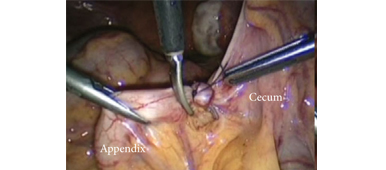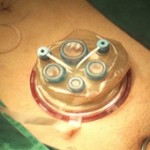Laparoscopic and robot-assisted continent urinary diversions
Video: Double Yang-Monti ileal conduit
Video: Mitrofanoff appendicovesicostomy
Laparoscopic and robot-assisted continent urinary diversions (Mitrofanoff and Yang-Monti conduits) in a consecutive series of 15 adult patients: the Saint Augustin technique
Denis Rey*, Elie Helou*†, Marco Oderda*‡, Jacopo Robbiani*, Laurent Lopez* and Pierre-Thierry Piechaud*
*Department of Urology, Clinique Saint Augustin, Bordeaux, France, †Saint Joseph University, Beirut, Lebanon and ‡Department of Urology, University of Turin, Turin, Italy
OBJECTIVE
• To present a series of 15 laparoscopic and robot-assisted Mitrofanoff and Yang-Monti vesicostomies in an adult population, and to assess the feasibility and safety of these minimally invasive approaches.
PATIENTS AND METHODS
• Between 2009 and 2012, 15 patients underwent laparoscopic (n = 11) or robot-assisted (n = 4) construction of vesicostomy by a single surgeon (D.R.): Mitrofanoff appendicovesicostomy (n = 11) or double Yang-Monti ileal conduit (n = 4). Fourteen patients underwent concomitant augmentation enterocystoplasty.
• Indications for surgery included neurogenic bladder (n = 11) and urethral dysfunction (n = 4).
• The patients were evaluated postoperatively using cystography. Quality of life (QoL) was evaluated using an internally developed questionnaire.
RESULTS
• All surgeries were successfully completed with no conversions. Operating time was always <5 h. The mean estimated blood loss was 150 mL and the mean follow-up was 22 months.
• Early postoperative complications included deep retrovesical abscess (n = 2) and upper urinary tract infections (n = 4), and one patient had peri-operative cardiac failure.
• Late postoperative complications included stomal stenosis (n = 2), persistent low-pressure bladder incontinence (n = 1) and recurrent infections (n = 1). Surgical excision of the conduit was necessary in one patient.
• Postoperatively, patients showed complete bladder emptying and no leak on follow-up cystography. According to our QoL questionnaire, 13/15 patients did not regret the surgery.
CONCLUSION
• While a longer follow-up is needed to assess the durability of our results, this series shows that the laparoscopic and robot-assisted approaches for the construction of continent urinary diversions are feasible and safe in an adult population.



